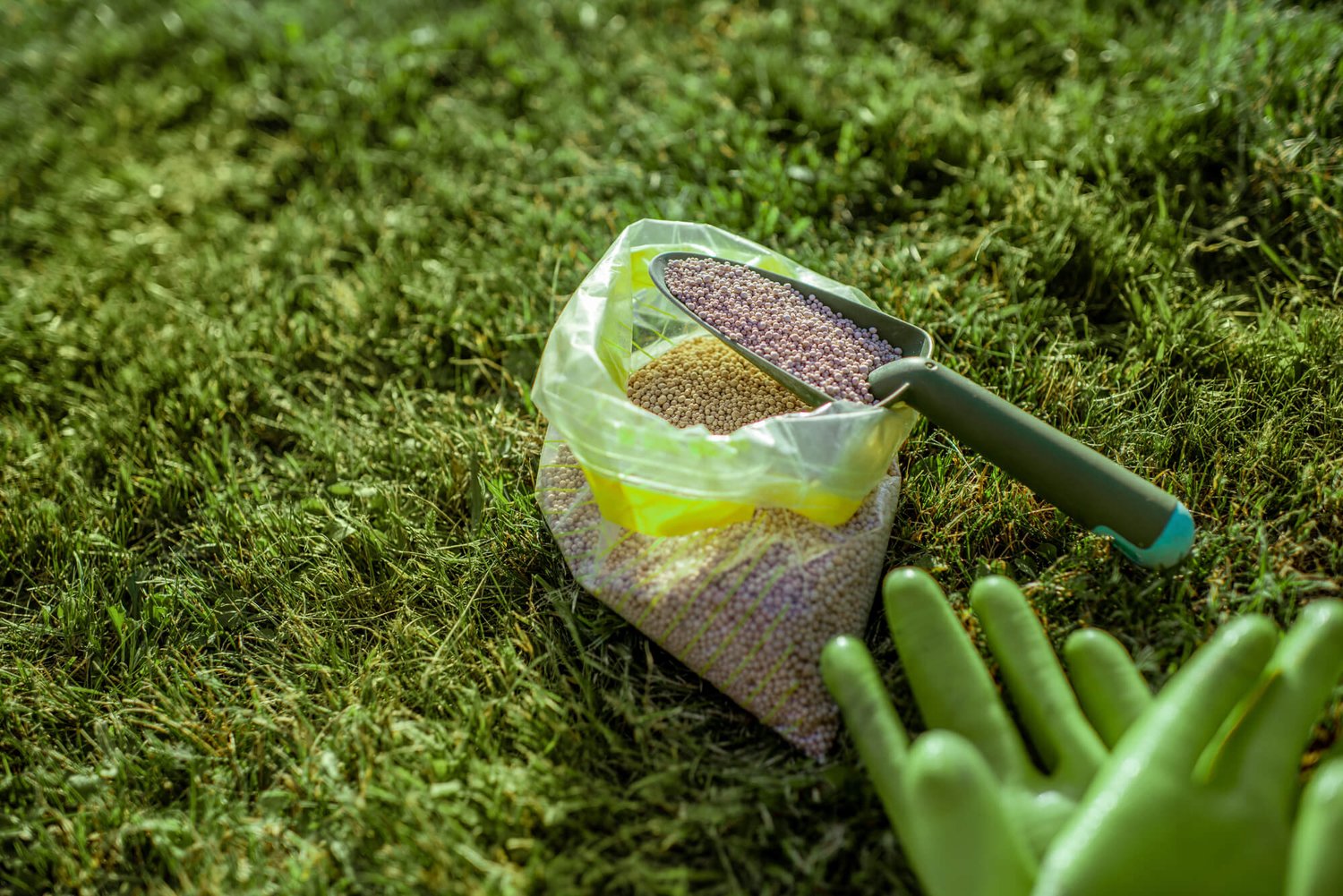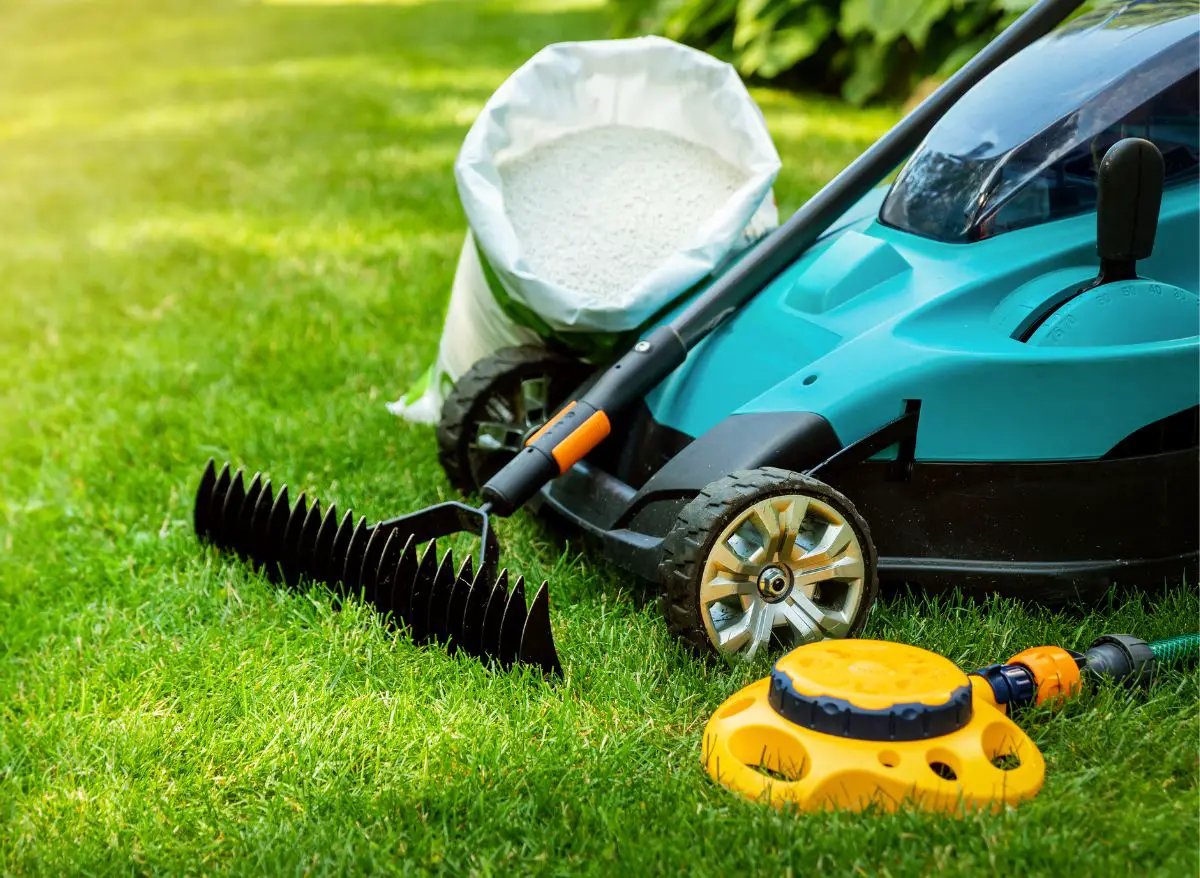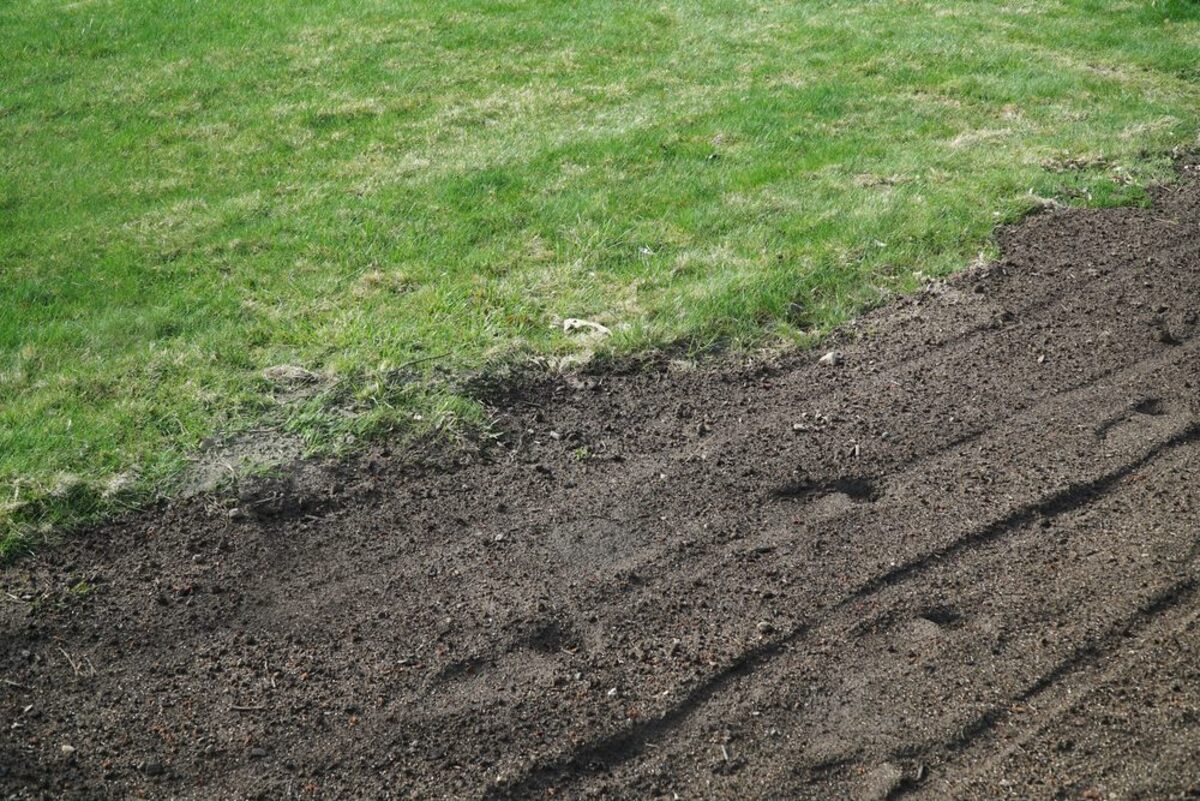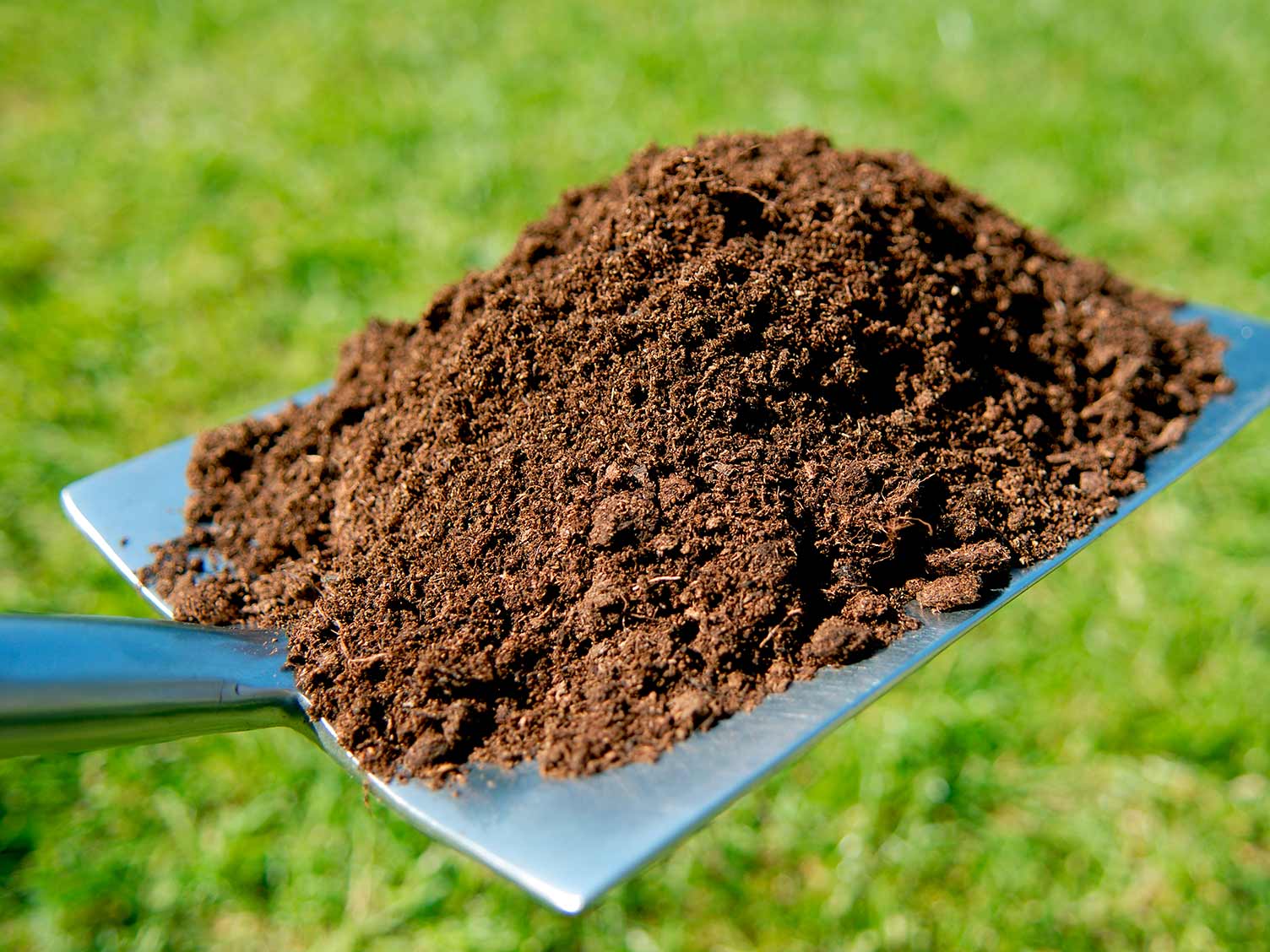Home>Gardening Basics>Understanding Soil>How To Improve Lawn Soil


Understanding Soil
How To Improve Lawn Soil
Published: February 13, 2024
Learn the key factors to understanding soil and how to improve your lawn soil for better growth and health. Discover effective techniques and tips.
(Many of the links in this article redirect to a specific reviewed product. Your purchase of these products through affiliate links helps to generate commission for Chicagolandgardening.com, at no extra cost. Learn more)
Table of Contents
Introduction
Welcome to the world of lawn care! Whether you are a seasoned gardener or just starting out, understanding soil is key to achieving a lush and healthy lawn. Your lawn soil provides the foundation for all the plants and grass that grow in your yard, so it is important to have a good understanding of its composition and how to improve it.
Having a healthy lawn soil is essential for various reasons. Firstly, it provides the necessary nutrients that plants need to grow and thrive. A well-balanced soil composition ensures that your grass receives the right amount of nutrients, which in turn promotes optimal growth, color, and resilience.
Secondly, lawn soil affects the water-holding capacity and drainage of your yard. Proper soil drainage is crucial for preventing waterlogged areas and ensuring that excess water can flow away, reducing the risk of root rot and other water-related issues. On the other hand, if the soil doesn’t retain enough moisture, your lawn may suffer from dry patches and dehydration.
Lastly, lawn soil plays a vital role in supporting the natural ecosystem in your yard. Healthy soil is teeming with beneficial microorganisms and earthworms, which aid in breaking down organic matter, improving soil structure, and promoting nutrient cycling. These microscopic organisms contribute to the overall health and resilience of your lawn.
To ensure that your lawn soil is optimal for growing a vibrant and beautiful lawn, it’s important to assess its current condition and make necessary improvements. In the following sections, we will guide you through the process of understanding your lawn soil, conducting soil tests, interpreting the results, and implementing proper amendments to enhance its quality.
By the end of this guide, you will have the knowledge and tools to transform your lawn soil into a thriving environment that supports healthy and lush grass growth. Let’s dive in and unlock the secrets of improving your lawn soil!
Understanding the Importance of Lawn Soil
Lawn soil serves as the foundation for your entire lawn ecosystem, playing a vital role in the health and longevity of your grass. Understanding the importance of lawn soil can help you make informed decisions about how to care for and improve your lawn.
One key aspect of lawn soil is its ability to provide essential nutrients to your grass. Just like humans, plants require a balanced diet to grow and thrive. Lawn soil acts as a reservoir for vital nutrients such as nitrogen, phosphorus, and potassium, which are essential for healthy plant growth. Without these nutrients, your grass may become weak, discolored, and susceptible to diseases and pests.
Another crucial aspect of lawn soil is its water-holding capacity. It influences the amount of water that soil can retain and how well it drains excess water. Proper drainage and water-holding capacity are essential for preventing waterlogged areas or dry patches in your lawn. Well-drained soil allows oxygen to reach the roots and prevents water from pooling, reducing the risk of root rot and other water-related issues. On the other hand, soil that retains too much water can suffocate the roots and lead to drowning and root decay.
Soil texture also plays a significant role in lawn health. Soil can be classified into three main types: sandy, clay, and loam. Sandy soil drains quickly but struggles to retain moisture and nutrients, while clay soil retains water but may become compacted and poorly drained. Loam soil, which is a combination of sand, silt, and clay, is generally considered the ideal soil type for lawns, as it offers good drainage, moisture retention, and nutrient availability.
The pH level of your lawn soil is another critical factor to consider. pH refers to the acidity or alkalinity of the soil, with a pH of 7 being neutral. Different grass types thrive in different pH ranges. Most grasses prefer slightly acidic soil (pH 6 to 7), while others may tolerate more alkaline or acidic conditions. Understanding the pH level of your soil is essential for selecting the appropriate grass varieties and making necessary adjustments to promote optimal plant growth.
Lastly, the overall structure and composition of your lawn soil influence its ability to support beneficial microorganisms and earthworms. These microscopic organisms break down organic matter, help create a healthier soil structure, and aid in nutrient cycling. By promoting a healthy soil ecosystem, you can ensure the long-term resilience and vitality of your lawn.
Understanding the importance of lawn soil is crucial for maintaining a beautiful and healthy lawn. By grasping the significance of nutrient availability, water-holding capacity, soil texture, pH levels, and soil structure, you can make informed decisions about how to care for and improve your lawn soil. In the following sections, we will explore various methods to assess and enhance your lawn soil, so you can create an optimal growing environment for your grass.
Assessing Your Lawn Soil
Before embarking on any soil improvement project, it is crucial to assess the current condition of your lawn soil. This assessment will provide valuable insights into the soil’s composition and any potential issues that may need to be addressed.
One of the first things to consider is the texture of your soil. Soil texture refers to the relative proportions of sand, silt, and clay particles in the soil. Sandy soils have larger particles and tend to drain quickly, while clay soils have smaller particles and retain water more effectively. Loam soils strike a balance between the two, providing good drainage and water retention. You can perform a simple test to determine your soil’s texture by squeezing a moistened soil sample in your hand. Sandy soil will feel gritty, clay soil will feel sticky, and loam soil will feel crumbly.
In addition to texture, it is important to assess the overall moisture level of your soil. Dig a small hole about 6-8 inches deep and observe the soil’s moisture content. Does it feel dry, moist, or excessively wet? This will give you an idea of whether the soil is too dry or waterlogged, helping you determine if drainage or irrigation adjustments are necessary.
Another important factor to assess is the presence of any compaction or hardpan layers in the soil. Compacted soil can restrict water and nutrient movement, as well as hinder root growth. To check for compaction, insert a garden fork or soil probe into the ground. If it becomes difficult to penetrate, it may indicate the presence of compacted soil. You may also notice water pooling or excessive runoff after heavy rain, which can be a sign of poor soil structure.
Finally, evaluate the overall color and appearance of your lawn. Healthy soil should have a dark, rich color indicative of organic matter content. If your soil appears pale or lacks organic matter, it might benefit from improvements in nutrient availability and organic content.
By assessing your lawn soil, you can gain insights into its texture, moisture level, compaction, and overall health. This understanding will guide you in making informed decisions about the necessary improvements to create a more favorable environment for your lawn. In the next section, we will explore various soil testing methods to further analyze the composition of your lawn soil.
Soil Testing Methods
To gain a more accurate understanding of your lawn soil’s composition and nutrient levels, conducting a soil test is highly recommended. Soil testing involves collecting samples from different areas of your lawn and sending them to a laboratory for analysis. This analysis will provide valuable insights into the pH level, nutrient content, and other important parameters of your soil.
There are various soil testing methods available, ranging from DIY kits to professional laboratory testing. Here are three common methods you can consider:
- DIY Soil Test Kits: DIY kits are readily available at garden centers and online retailers. They typically come with instructions and test strips or capsules that allow you to measure pH, nitrogen, phosphorus, and potassium levels. While these kits offer a convenient and affordable option, they may provide less precise results compared to professional laboratory testing.
- Cooperative Extension Service: Many universities and cooperative extension services offer soil testing facilities. They provide detailed instructions on how to collect samples and often offer comprehensive testing services at a reasonable cost. This option is recommended if you prefer a more accurate and reliable analysis of your soil’s composition.
- Professional Laboratory Testing: Professional soil testing laboratories offer the most comprehensive analysis of your soil. They conduct advanced tests to assess various soil parameters, including pH level, organic matter content, nutrient availability, and soil texture. This option is ideal if you want a detailed and customized soil analysis, especially if you have specific concerns or you’re starting a large-scale landscaping project.
When collecting soil samples, it is important to follow proper procedures to ensure accurate results. Use a clean garden trowel or soil probe to collect samples from different areas of your lawn. Take samples at a depth of 4 to 6 inches, and collect multiple samples throughout your yard, mixing them together in a clean container. Avoid areas near sidewalks, buildings, or large trees, as these may have different soil conditions. Label the container with the sampling location and date, and submit it to the chosen testing facility as per their instructions.
By conducting a soil test, you will gain valuable insights into the current composition of your lawn soil. The results will help you identify any nutrient deficiencies or imbalances, assess the need for adjusting pH levels, and guide you in selecting the appropriate soil amendments to improve the health and quality of your lawn soil. In the next section, we will discuss how to interpret soil test results and make informed decisions based on the analysis.
Interpreting Soil Test Results
Once you receive the results of your soil test, it is important to understand and interpret the information provided. Soil test reports typically include measurements of pH level, nutrient levels, and other relevant parameters. Interpreting these results will allow you to make informed decisions about the necessary amendments to optimize your lawn soil.
One of the key measurements in a soil test report is the pH level. pH measures the acidity or alkalinity of the soil and is crucial for nutrient availability to plants. Most lawn grasses prefer a slightly acidic soil with a pH range between 6 and 7. If your pH level is outside this range, adjustments may be necessary. If the soil is too acidic (low pH), you can raise the pH by adding lime. If the soil is too alkaline (high pH), you can lower the pH by adding elemental sulfur or other acidic amendments.
The nutrient levels indicated in the soil test report will provide insights into whether your lawn soil is deficient or in excess of certain nutrients. The report will specify the levels of macronutrients such as nitrogen (N), phosphorus (P), and potassium (K), as well as micronutrients like iron (Fe), manganese (Mn), and zinc (Zn). Depending on the results, you may need to add fertilizers or other amendments to rebalance nutrient levels in the soil. It is important to follow the recommendations provided by the soil testing facility to ensure proper nutrient management for your lawn.
In addition to pH and nutrient levels, the soil test report may include information on organic matter content, cation exchange capacity (CEC), and soil texture. Organic matter is essential for soil fertility and overall soil health, so if your soil has a low organic matter content, adding compost, well-rotted manure, or other organic amendments can help improve its quality. Cation exchange capacity refers to the soil’s ability to hold and release nutrients, and it is an important factor in nutrient availability. Soil texture information can help you understand the water-holding capacity and drainage characteristics of your soil.
It’s important to note that soil test results may differ based on the testing method used, the season, and other factors. Therefore, it is crucial to follow the recommendations provided by the specific soil testing facility or consult with a local extension service or agricultural expert to ensure accurate interpretation of the results.
By interpreting the soil test results, you will have a clear understanding of the composition and condition of your lawn soil. This knowledge will guide you in making informed decisions about the necessary amendments and adjustments to improve the nutrient balance, pH level, and overall health of your lawn soil. In the next section, we will discuss the steps you can take to improve your lawn soil based on the analysis and interpretation of the soil test results.
Steps to Improve Lawn Soil
Based on the analysis and interpretation of your soil test results, you can take specific steps to improve the quality and health of your lawn soil. These steps include adding organic matter, adjusting soil pH, incorporating nutrients, addressing soil compaction, and improving drainage. By implementing these measures, you can create an optimal growing environment for your lawn.
One of the most effective ways to improve lawn soil is by adding organic matter. Organic matter helps improve soil structure, enhances nutrient-holding capacity, and promotes beneficial microbial activity. You can incorporate organic matter by applying compost, well-rotted manure, leaf mulch, or other organic materials to the top layer of your soil. This practice not only enriches the soil with nutrients but also helps improve its water-holding capacity.
If your soil test results indicate a pH imbalance, you can adjust it to the optimal range for your grass. Adding lime can help raise the pH level in acidic soils, while elemental sulfur or other acidic amendments can lower pH levels in alkaline soils. It is important to follow the recommendations provided by your soil test report or consult with local experts to determine the appropriate amount and type of amendments for your lawn soil.
Incorporating essential nutrients into your soil is another crucial step to improve its fertility. Based on the nutrient deficiencies or imbalances identified in your soil test report, you can select appropriate fertilizers or soil amendments to supplement the lacking nutrients. Be sure to follow the recommended application rates and timings to avoid over or under-fertilization, as excessive fertilization can harm your lawn and the environment.
If your soil is compacted, aerating the lawn can help alleviate the issue. Aeration involves creating small holes in the soil to allow air, water, and nutrients to penetrate deeper into the root zone. This process helps loosen compacted soil, allowing roots to grow more easily and enhancing overall soil health. Aeration can be done using a manual or mechanical aerator, depending on the size of your lawn and the level of compaction.
In cases where poor drainage is a concern, addressing the underlying issues is essential. This may involve grading the landscape to redirect water flow, installing drainage systems or French drains, or creating raised beds to improve drainage. Proper drainage is crucial for preventing waterlogged areas, reducing the risk of root rot, and promoting healthy grass growth.
It is important to remember that soil improvement is an ongoing process. Regular maintenance practices like mowing at the correct height, watering deeply and infrequently, and removing thatch buildup can also contribute to the overall health of your lawn soil. Keep in mind that changes to your soil may take time to show results, so be patient and consistent with your lawn care efforts.
By implementing these steps to improve your lawn soil, you can create a favorable growing environment for your grass. Regularly monitoring and retesting your soil will help you track the progress and make necessary adjustments over time. In the next section, we will discuss common issues related to lawn soil and how to address them effectively.
Adding Organic Matter to Soil
One of the most effective ways to improve your lawn soil is by adding organic matter. Organic matter provides numerous benefits, including enhancing soil structure, promoting nutrient availability, and supporting beneficial microbial activity.
There are several ways to incorporate organic matter into your soil. One common method is the application of compost. Compost is a mixture of decomposed organic materials, such as leaves, grass clippings, kitchen scraps, and yard waste. It is rich in nutrients and beneficial microorganisms that can help improve overall soil health.
To apply compost, spread a layer of it evenly across the soil surface and gently rake it into the top few inches of the soil. This will help introduce organic matter to the root zone, allowing plants to benefit from the nutrients and improved soil structure.
Another option is the use of well-rotted manure, which provides a rich source of organic matter and nutrients. Before applying manure, make sure it has undergone sufficient decomposition to avoid any potential issues with pathogens or weed seeds. Similar to compost, spread a layer of well-rotted manure across the soil surface and incorporate it into the top layer for maximum benefit.
In addition to compost and manure, you can consider using other organic materials such as leaf mulch or straw. These materials help retain moisture in the soil, prevent weed growth, and gradually break down to enrich the soil with organic matter over time.
It is important to note that the amount of organic matter required will depend on the current soil composition and the specific needs of your lawn. Applying 1 to 2 inches of compost or other organic materials annually is generally sufficient to improve soil quality over time. However, it is always beneficial to consult your soil test report or seek guidance from local experts to determine the optimal amount and frequency of organic matter application for your specific lawn.
Regularly adding organic matter to your soil improves its overall fertility, water-holding capacity, and nutrient availability. These improvements not only support the health and growth of your lawn but also contribute to the long-term sustainability of your soil ecosystem.
In summary, incorporating organic matter such as compost, well-rotted manure, or leaf mulch into your lawn soil is a valuable practice for improving soil quality. The addition of organic matter enhances soil structure, increases nutrient availability, and promotes the growth of beneficial microorganisms. By consistently adding organic matter to your soil, you can create a thriving ecosystem that supports healthy and vibrant lawn growth.
Adjusting Soil pH
The pH level of your soil plays a crucial role in the health and growth of your lawn. It determines the soil’s acidity or alkalinity and influences the availability of essential nutrients to your grass. Adjusting the soil pH to the optimal range for your specific lawn grass is important for promoting optimal growth and overall lawn health.
If your soil test results indicate that your lawn soil is too acidic (low pH), you can raise the pH by adding lime. Lime contains calcium and magnesium, which help neutralize acidity and increase soil pH. There are different types of lime available, including agricultural lime and dolomitic lime. The type and amount of lime needed will depend on your soil’s current pH level and the recommendations provided in your soil test report.
Applying lime is best done during the fall or spring, when there is less stress on the grass and the lime has time to react with the soil. It’s important to follow the recommended application rates and techniques to avoid over-liming, as excessive application can lead to imbalances and other issues. Testing the soil pH regularly after lime application will help you monitor and maintain the desired pH level.
On the other hand, if your soil is too alkaline (high pH), you can lower the pH by adding elemental sulfur or other acidic amendments. Elemental sulfur is gradually converted into sulfuric acid by soil bacteria, which helps lower the pH over time. Again, it is important to follow the recommended rates and guidelines for application.
Adjusting soil pH requires careful consideration and monitoring to achieve the optimal range for your specific grass type. Different grass species have varying pH preferences, so it’s important to know the requirements of your grass. Most lawn grasses prefer a slightly acidic soil with a pH range between 6 and 7. By adjusting the soil pH to match your grass’s preferences, you can enhance nutrient uptake, promote healthy root development, and maximize the overall health and appearance of your lawn.
It’s worth noting that adjusting soil pH may take time, as it is a gradual process. Regular monitoring and testing of the soil pH will help you stay on track and make any necessary adjustments along the way. Consult with local experts or your soil test report to ensure accurate and appropriate pH adjustment methods for your specific lawn soil. By understanding and adjusting the soil pH, you can create a more favorable growing environment for your grass and achieve a healthy and thriving lawn.
Incorporating Nutrients into Soil
Proper nutrient levels are essential for the health and vitality of your lawn. Incorporating nutrients into your soil ensures that your grass has access to the necessary elements for optimal growth and development. By understanding the nutrient requirements of your lawn and implementing appropriate practices, you can maintain a vibrant and lush lawn.
One of the key aspects of nutrient incorporation is selecting the right fertilizers. Fertilizers contain essential nutrients such as nitrogen (N), phosphorus (P), and potassium (K), as well as other micronutrients that are necessary for plant growth. These nutrients are typically represented by the N-P-K ratio listed on fertilizer packaging. For example, a 10-10-10 fertilizer contains equal parts of nitrogen, phosphorus, and potassium.
The nutrient requirements of your lawn can vary depending on factors such as grass type, soil composition, and environmental conditions. Consulting your soil test report or local experts can provide specific recommendations for the type and amount of fertilizer needed. It is crucial to follow these recommendations to avoid over-fertilization, which can harm your lawn and contribute to environmental pollution.
When applying fertilizers, it is important to consider the timing and method of application. Spring and fall are typically the best times to fertilize, as grass is actively growing during these seasons. Applying fertilizers too early in the spring can lead to excessive top growth and may make your lawn more susceptible to disease and insect infestation.
There are different methods of applying fertilizers, including broadcasting (spreading evenly over the entire lawn), spot treating (applying only to specific areas), and using a drop spreader or rotary spreader. It’s important to calibrate your spreader correctly to ensure even and accurate fertilizer distribution.
In addition to traditional synthetic fertilizers, you may also consider organic alternatives such as compost or organic-based fertilizers. These organic options provide an additional benefit of improving soil structure and microbial activity, promoting long-term soil health. Compost, for example, not only releases nutrients slowly over time but also increases soil organic matter content.
Regular monitoring of your lawn and soil is important to assess nutrient needs and make appropriate adjustments. By observing the health and appearance of your lawn, you can identify signs of nutrient deficiencies or excesses, such as yellowing or stunted growth. Pay attention to changes in color, density, and overall vigor of your grass, and adjust your fertilization practices accordingly.
Remember, incorporating nutrients into your soil is an ongoing process. It is important to maintain a balanced and sustainable approach to fertilization to ensure the long-term health and vitality of your lawn. By providing your grass with the necessary nutrients, you can create an optimal growing environment, leading to a lush and vibrant lawn.
Aeration and Soil Compaction
Aeration and addressing soil compaction are crucial steps in maintaining a healthy lawn. Over time, soil can become compacted, leading to restricted air, water, and nutrient movement, which can hinder the growth and overall health of your grass. Aeration, the process of creating small holes in the soil, helps alleviate compaction and promotes a healthier root system.
There are several signs that your lawn may be suffering from soil compaction. These include patchy or thinning grass, water runoff or pooling after rain, and difficulty in inserting a garden fork or probe into the soil. Compacted soil can limit root growth and lead to shallow root systems, making grass more susceptible to stress and damage.
Aerating your lawn involves making small holes in the soil to allow better air and water penetration. There are two common methods of aeration: core aeration and spike aeration. Core aeration removes small plugs or cores of soil from the ground, which helps loosen compacted soil and improves overall soil structure. Spike aeration, on the other hand, involves piercing the soil with solid metal spikes to create small holes.
To aerate your lawn using a core aerator, first, moisten the soil to allow easy penetration of the aerating machine. Then, run the aerator over the lawn in a systematic pattern, ensuring that the cores are evenly spaced. The removed plugs can be left on the lawn to break down naturally or collected and removed if desired.
Spike aeration can be done using manual or mechanical aerators with solid spikes. This method is quicker and easier than core aeration but may not provide the same level of soil improvement. It is important to note that spike aeration can further compress the sides of the holes, potentially exacerbating compaction in the long run.
Aerating your lawn should ideally be done when the grass is actively growing, such as in spring or fall. Avoid aerating during periods of dormancy or extreme heat or cold. Regular aeration, typically done once a year, can help maintain soil health and prevent further compaction.
In addition to aeration, it is important to address any underlying issues that may contribute to soil compaction. When mowing, be sure not to cut the grass too short, as taller grass provides shade to the soil surface and promotes deeper root growth. Avoid heavy foot traffic on the lawn, especially when the soil is wet, as this can compact the soil further.
By regularly aerating and addressing soil compaction, you can improve the overall health and functioning of your lawn soil. Aeration helps create a favorable environment for root growth, enhances nutrient and water uptake, and supports a healthy and vibrant lawn.
Dealing with Drainage Issues
Proper drainage is essential for maintaining a healthy lawn. Excess water accumulation can lead to waterlogged areas, soil erosion, root rot, and other issues that can negatively impact the health and appearance of your grass. Addressing drainage issues in your lawn is important to ensure optimal growth and prevent water-related damage.
There are several potential causes of poor drainage in your lawn. One common issue is compacted soil, which can prevent water from percolating down into the soil. In addition, grading problems, where the land is improperly sloped, can lead to water pooling in certain areas. Overwatering, excessive thatch buildup, and soil composition (such as heavy clay soils) can also contribute to poor drainage.
To address drainage issues, start by assessing the slope of your lawn. Ideally, the lawn should have a slight slope away from your house or structures to ensure proper water runoff. If the slope is insufficient or if certain areas have become low-lying and prone to pooling, regrading the landscape may be necessary. This involves redistributing soil or creating swales to redirect water flow away from problem areas.
In cases of excessive thatch buildup, which can hinder water penetration into the soil, dethatching can help alleviate the issue. Dethatching involves removing the layer of dead grass and organic debris that accumulates between the grass blades and the soil surface. This can be done using a thatch rake or a specialized dethatching machine, depending on the severity of the thatch layer.
In addition to addressing grading and thatch issues, improving soil structure can also enhance drainage. If your soil is heavy clay, incorporating organic matter, such as compost or well-rotted manure, can help improve its drainage capacity. Adding sand or gypsum to heavy clay soils can also aid in breaking up compacted soil and improving drainage.
In some cases, installing drainage systems may be necessary to manage excessive water in your lawn. French drains, for example, can be installed to redirect water away from problem areas. These drains consist of perforated pipes covered with gravel and can be placed in trenches dug throughout the lawn. Additionally, installing catch basins or rain barrels can help collect and redirect excess water from downspouts or other areas.
Regular maintenance practices can also play a role in improving drainage. Avoid overwatering your lawn, as this can contribute to waterlogging and poor drainage. Instead, water deeply and infrequently to encourage deep root growth and proper water movement through the soil. Ensure that irrigation systems are functioning correctly and not adding to drainage problems.
By addressing drainage issues in your lawn, you can mitigate the risk of water-related damage and promote a healthy and thriving lawn. Assessing the slope, managing thatch buildup, improving soil structure, and implementing appropriate drainage solutions will help ensure proper water flow and drainage, providing a favorable environment for your grass to grow and flourish.
Conclusion
Understanding soil and its impact on your lawn is essential for maintaining a healthy and vibrant outdoor space. By grasping the importance of soil composition, pH level, nutrient availability, compaction, and drainage, you can make informed decisions to improve and nurture your lawn soil.
Assessing your lawn soil through careful observation and soil testing allows you to identify areas for improvement. Interpreting soil test results provides valuable insights into the pH level, nutrient content, and other parameters of your soil, helping you make informed decisions about the necessary amendments.
Implementing steps to improve your lawn soil, such as adding organic matter, adjusting pH, incorporating nutrients, addressing compaction, and improving drainage, will create a healthy and balanced growing environment for your grass. Regular maintenance practices, including aeration, dethatching, proper watering, and monitoring, will further support the long-term health of your lawn soil.
It’s important to note that soil improvement is an ongoing process. Caring for your lawn soil requires attentiveness, patience, and adaptation to the changing needs of your grass and soil. Regular soil testing, monitoring, and reevaluation will help you track the progress and make necessary adjustments along the way.
By adopting good soil management practices, you can create a vibrant and resilient lawn that shines with lush greenery and healthy growth. Understanding and nurturing your lawn soil is the first step toward achieving a beautiful outdoor space that you can enjoy for years to come.







